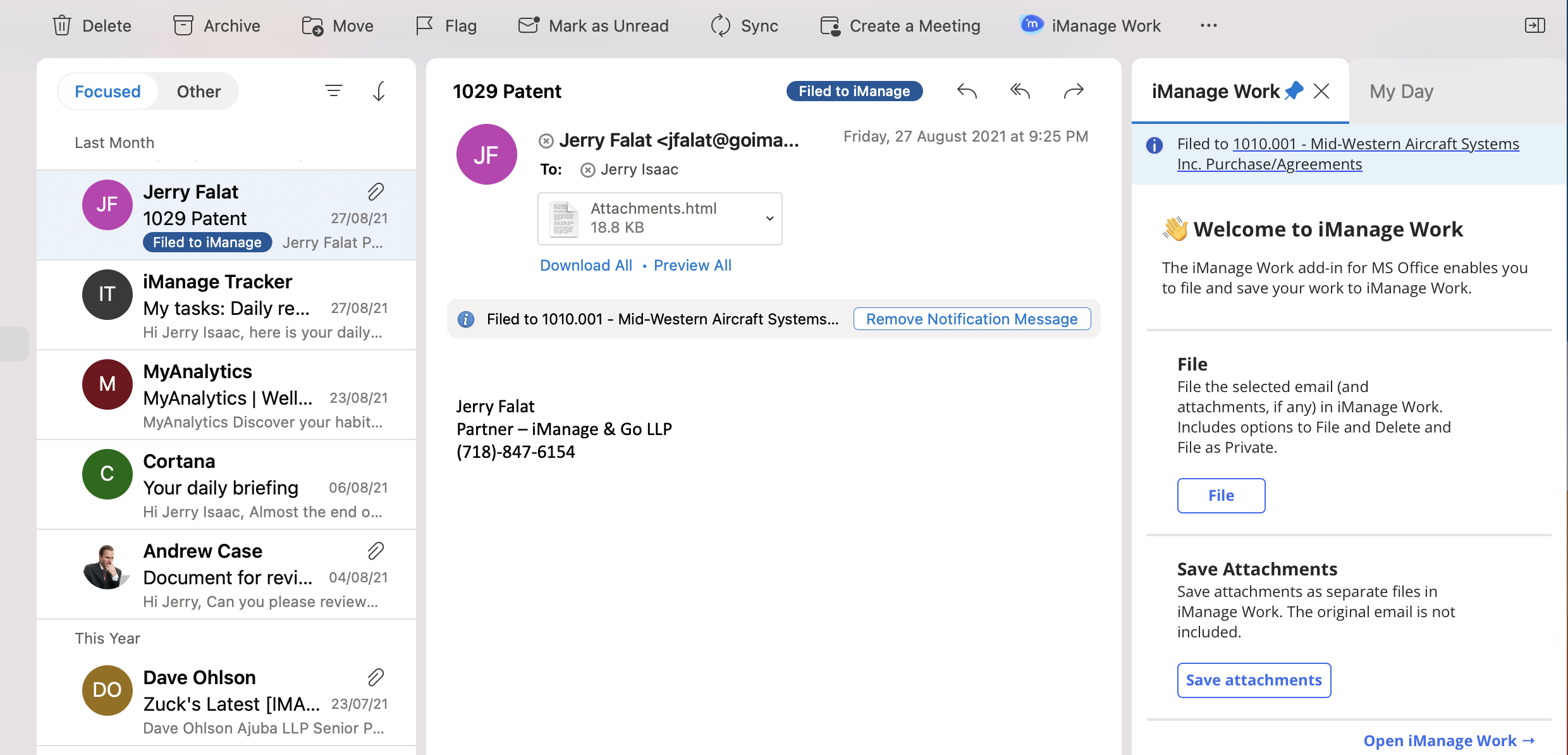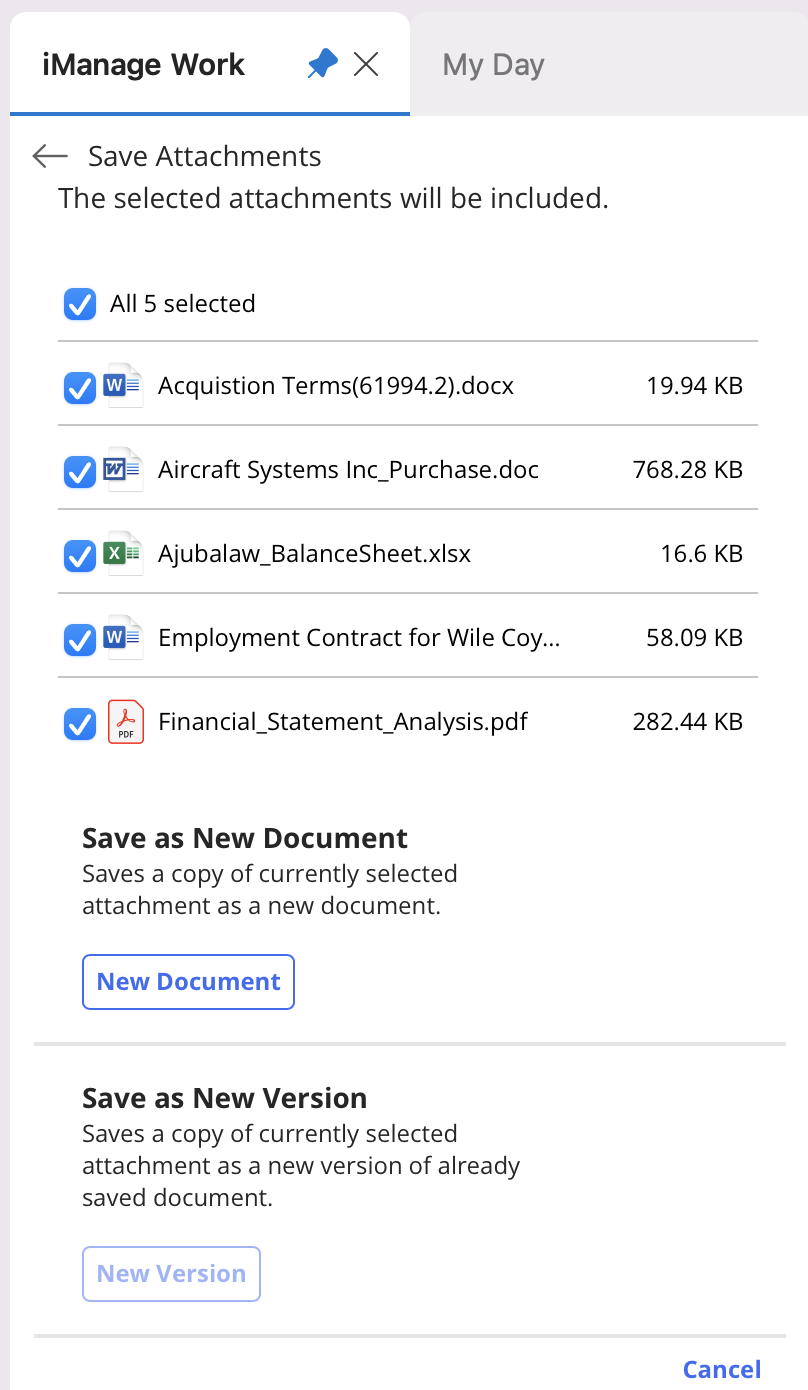Save emails and attachments using the iManage Work panel in Microsoft Outlook
Saving emails and attachments
Select the email that you want to save or the email for which you want to save the attachments.
Select iManage Work from the toolbar. To add the option to the toolbar, see Adding the iManage Work option to the toolbar.
From the panel that opens, select File.
Navigate to the desired location in iManage Work and choose Select.
The email and all its attachments) are saved to iManage Work.
Figure: Filed email (with attachment)

Selecting the attachments to save
Select the email that you want to save or the email for which you want to save the attachments.
Select iManage Work from the toolbar. To add the option to the toolbar, see Adding the iManage Work option to the toolbar.
From the panel that opens, select Save attachments. The list of attachments, the size of each attachment, and the number of selected attachments is displayed. By default, all attachments are selected.
(Optional) Clear the check boxes for the attachments that you do not want to save. The New Document option is enabled and the New Version option remains disabled until you clear the check boxes for all but one attachment.
Figure: Save Attachments options
Select New Document. Navigate to the desired location in iManage Work and then choose Select. The files are saved to iManage Work and the following notification is displayed above the email body:
Figure: All files saved
(Alternatively) Select one of the attachments and then select New Version to save the attachment as a new version of an existing file in iManage Work. Perform the following steps:
Navigate to the desired location and choose Select.
(Optional) Add Comments and Subclass for the new version and select Save.
The attachment is saved to iManage Work as a new version and the following notification is displayed above the email body:
Figure: File saved
Savings emails and attachments using the iManage Work view in the panel
Alternatively, you can save Microsoft Outlook emails and attachments by selecting and dragging the required email to the location you want. For more information, see Dragging folders, files, emails, and attachments into iManage Work.
You do not need to navigate and drill down the entire hierarchy of folders and subfolders each time you have to file an email. With the default email filing folder defined for an iManage Work Server and the same existing in a workspace, you just need to select the required workspace and file to it. The email is automatically saved to the default email filing folder in the workspace. For more information configuring the option, refer to the Default Email Folder section in iManage Work Server Administration Guide .
 label appears in the list view and to the right-side of the email subject in the reading pane. T
label appears in the list view and to the right-side of the email subject in the reading pane. T